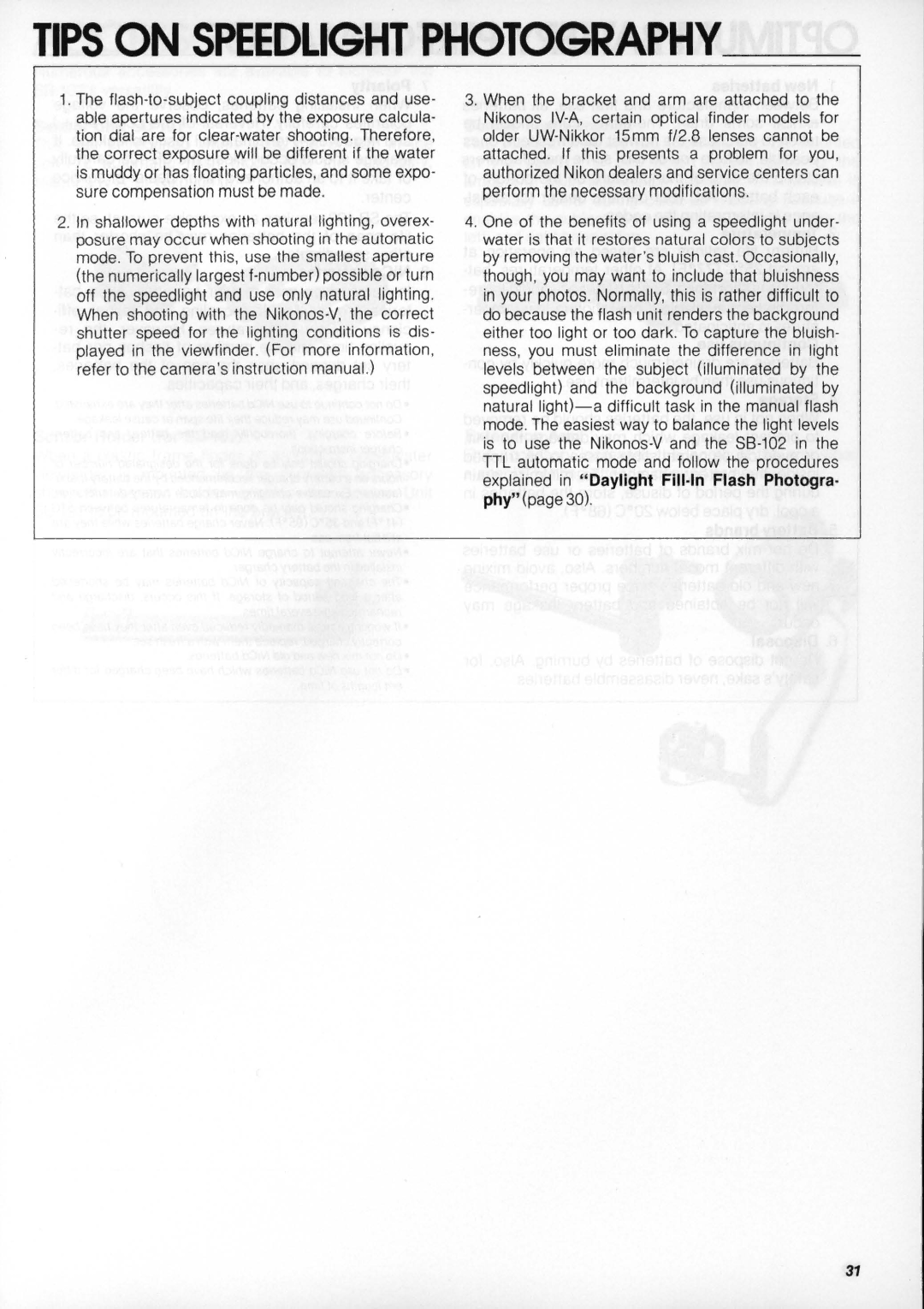TIPS ON SPEEDLIGHT PHOTOGRAPHY
1.The flash -to-subject coupling distances and use- able apertures indicated by the exposure calcula- tion dial are for clear-water shooting . Therefore, the correct exposure will be different if the water is muddy or has floating particles, and some expo- sure compensation must be made.
2.In shallower depths with natural lighting, overex- posure may occur when shooting in the automatic mode. To prevent this, use the smallest aperture (the numerically largest f-number) possible or turn off the speedlight and use only natural lighting. When shooting with the Nikonos-V, the correct shutter speed for the lighting conditions is dis- played in the viewfinder. (For more information, refer to the camera'sinstruction manual.)
3.When the bracket and arm are attached to the Nikonos IV-A, certain optical finder models for older UW-Nikkor 15mm fl2.B lenses cannot be attached. If this presents a problem for you , authorized Nikon dealers and service centers can perform the necessary modifications.
4.One of the benefits of using a speedlight under- water is that it restores natural colors to subjects by removing the water'sbluish cast. Occasionally, though , you may want to include that bluishness in your photos . Normally, this is rather difficult to do because the flash unit renders the background either too light or too dark. To capture the bluish- ness, you must eliminate the difference in light levels between the subject (illuminated by the speedlight) and the background (illuminated by natural light}-a difficult task in the manual flash mode. The easiest way to balance the light levels is to use the Nikonos-V and the 88-102 in the TTL automatic mode and follow the procedures explained in " Daylight Fill-In Flash Photogra- phy" (page 30).

